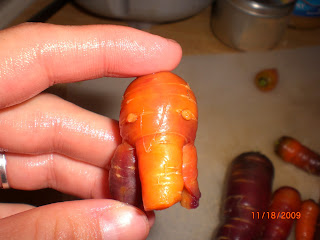
Grains make up about 80% of everything we eat; we love them! Mostly because with a blood-sugar problem, like I have, grains are very fulfilling. When I had all my food allergies a number of years ago I did a lot of research on the different types of grains. There are SO many that most people never use and some that they've never heard of.
When you can learn the ways to use all these amazing grains, you will find a whole new collection of tastes and textures. There are the more familiar grains, like wheat, oats, and barley. Most people know how to use these.
One grain that is familiar, but underutilized, is millet. It has great health benefits and is way cheap! You cook it just like rice and it is a good substitute for cous cous and is great in salads and in casseroles.
Then you have buckwheat, which is good as flour in pancakes and used in moderation in casseroles. It has an interesting flavor that some people don't really like.

Our personal favorite is quinoa. It cooks like rice and has hundreds of uses! It's amazing in soups, in waldorf salads, regular salads, in bread or pancakes (pre-cooked)...basically if we could afford it we would use it instead of rice in every instance. It's super healthy and tastes great. When cooked, it has these little 'tails', which is interesting.

Then there's Amaranth. It's smaller than Quinoa and just as good for you. Both are considered 'supergrains'. With amaranth you just have to make sure it's cooked, because it's not good for you if it's not completely cooked.

Teff is tied for favorite in my book. It's the smallest grain, not bigger than a grain of sand. I love this one because you can throw it uncooked in waffles and it is so small that it cooks along with the batter. It has a great, nutty flavor and adds to any dish. It can be easily hidden in any casserol or even taco meat.

The key with all these grains is to learn how to incorporate them into your established dishes and diet. You can keep some cooked in your fridge so they can be added to your normal dishes all week. Throw them in salads, stir fries, waffles, casseroles, etc. Grains will make any dish heartier and healthier. I have to eat this way to manage my bloodsugar, but even normal people say they like the taste of my food better :)
 My sister in law just taught me how to make my own yogurt, and it is so yummy and is way cheaper!
My sister in law just taught me how to make my own yogurt, and it is so yummy and is way cheaper! 























